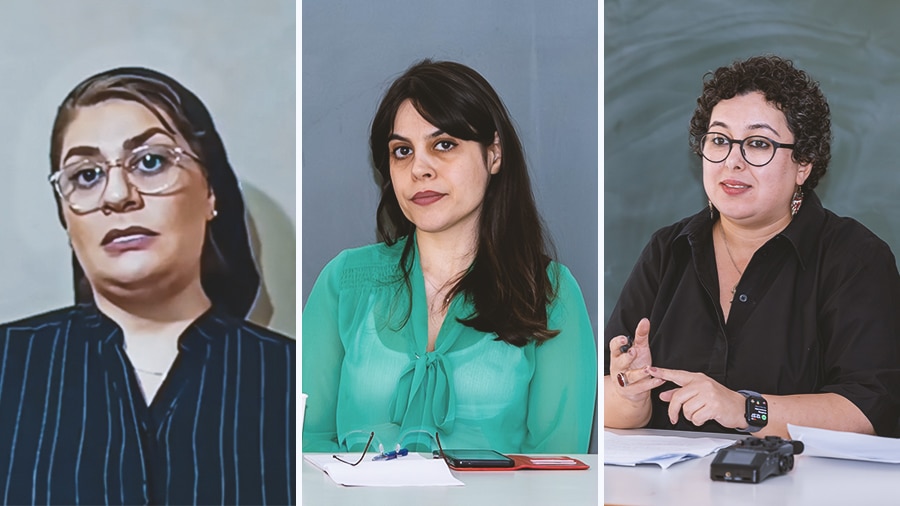The recent transformations in Iran’s sociopolitical landscape, especially since the November 2019 protests and the election of President Ebrahim Raisi, spurred significant shifts in Iran’s women’s شزفه movement. This shift is characterized by a strategic evolution within feminist activism, evident in both the changing approaches of established activists and the decentralized methods embraced by younger participants.
Maryam Foumani The New Map of the Women’s Movement in Iran
Motahareh Fouladi Organizing by Women for Women: Transcending Institutionalism in Iran
Moderator: Samaneh Khademi
Maryam Foumani The New Map of the Women’s Movement in Iran
Maryam Foomani’s research examines the reconfiguration of Iran’s women’s movement, highlighting how the tactics, relationships, and organizational models differ from those of the 2000s and early 2010s. Through interviews with activists within Iran and those who have recently left, Foomani explores the development of the new “map” of the women’s movement, assessing how intergenerational dialogues have shaped current strategies and the extent of collaboration between veteran feminists and newer activists.
Foomani’s study seeks to analyze how the recent wave of activism, especially during the “Woman, Life, Freedom” uprising, has fostered a vibrant exchange between the women’s movement and broader social movements. This includes a shift in communication models and regional activism, showing how the women’s movement in Iran has adapted to the political environment, promoting change even amidst repression.
The research also evaluates the activists’ outlook on gender equality and whether they see this struggle as interlinked with broader systemic transformations within Iran’s political structure. By contrasting these recent shifts with the history of the Iranian women’s movement from the Constitutional Revolution to 2018 (as documented by Foomani’s previous research), the study offers a comprehensive view of the current feminist landscape in Iran, emphasizing a modernized approach to gender equality advocacy.
Motahareh Fouladi Organizing by Women for Women: Transcending Institutionalism in Iran
Motahareh Fouladi presents a case for moving beyond traditional organizational structures in favor of a more community-centered approach. Her analysis suggests that Iran’s post-Jina uprising climate demands grassroots, women-led initiatives to achieve gender equality.
Rather than relying solely on formal organizations and top-down campaigns, Fouladi’s approach focuses on neighborhood-based actions and community solidarity, which have become central to the movement’s effectiveness. Drawing from phenomenological research with 100 female participants active in the “Woman, Life, Freedom” movement, Fouladi argues that the historic institutional models, while effective in some ways, have lost influence in contemporary Iran.
Her findings suggest that the impact of women-led activism increases when localized, with information about protests, campaigns, and statements shared through personal and neighborhood networks. This has spurred greater awareness and participation among women, bridging social and generational divides.
Furthermore, Fouladi emphasizes the power of mutual support and cooperation within the movement. By focusing on initiatives “by women, for women,” she identifies potential for structural and cultural change that advances women’s rights in Iran.



